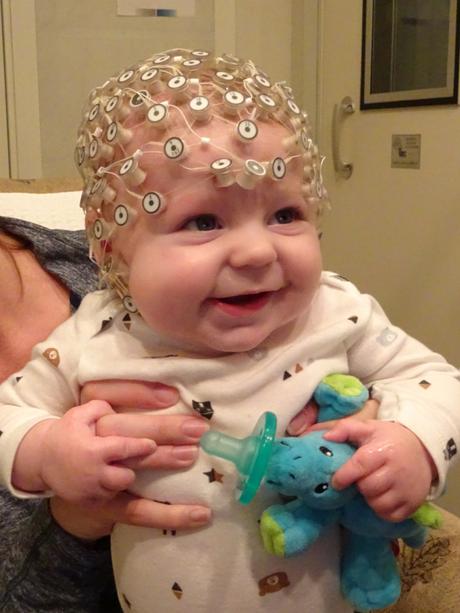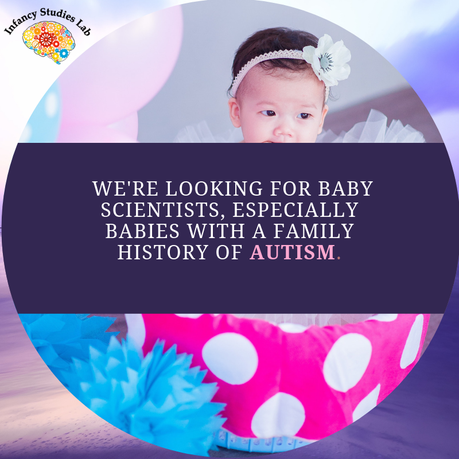by: Silvia Ortiz-Mantilla, April A. Benasich, Judith McDonald and Julie Morgan-Byrne, Infancy Studies Laboratory, Rutgers University

Many children with Autism Spectrum Disorder (ASD) have difficulties processing auditory information and producing and/or understanding language. Quite often these difficulties are seen as delays in achieving language milestones. During the first year of life, before even beginning to talk, typically developing infants must decipher incoming language, that is, be able to discriminate fast, successive changes in auditory sounds that occur in fractions of a second. This ability, called “rapid auditory processing”, is essential for infants to construct an acoustic representation or “map” of the sounds of their native language in the auditory areas of the brain. The accuracy of these sound maps, that are established by 12 months of age, determines how well and how quickly incoming language is processed. Brain maps are important for many reasons including linking sounds to meaning as infants begin to make sense of the environment that surrounds them. Specifically, these representations of language in the brain facilitate infants capturing the often tiny but critical differences in the sounds of consonants, for example, the difference between “ba” and “da”.
Research at our lab at Rutgers University is investigating how these brain maps are formed and how language sounds in the environment shape the organization and accuracy of these brain maps. The complex interaction of genetic factors, rapid auditory processing abilities and how the brain responds to environmental sounds, including speech, creates and sculpts these maps which determine how well language develops. It is still not clear if children with ASD have problems with rapid auditory processing or with establishment of these crucial brain maps of their native language. However, the fact that many children later diagnosed with autism, and that some of their younger siblings present language delay as early as 12 months of age suggest they may be related. In infants with autism, rapid auditory processing may not be as efficient, and these brain maps may not be as accurate as those without ASD. But how do researchers study language acquisition in infants with ASD? Younger siblings of children with ASD have a 15x higher probability of an autism diagnosis, making them an ideal group to better understand the earliest neural markers of brain function in language areas of the brain.
Our projects at the Infancy Studies Laboratory at Rutgers University-Newark aim to determine how infants set up these crucial brain maps and how we can improve this brain mapping by facilitating rapid auditory processing in those at higher risk for developmental language disorders. We want to understand typical and atypical development of the brain and how it relates to early language and to issues with language in autism. How do we do this? We developed a baby-friendly intervention that encourages babies to discriminate between sounds that become increasingly faster and more complex. In that way, the training facilitates rapid processing of important acoustic information, which helps with setting up these early auditory maps and also increases attention to environmental acoustic cues that signal “this might be language”. Many studies have demonstrated that the earlier an intervention is introduced, the greater the opportunity for improvement. This is because at these early ages, when neural connections are being made, the brain is more flexible and responsive to the tiny variations in sound that signal language.
So far, we have demonstrated in typically developing infants that focusing infant attention on important acoustic cues in the environment, even before they can produce words, improves auditory processing speed and supports formation of more precise acoustic maps. This, in turn, helps development of these important prelinguistic categories in the brain and improves acquisition of later language. When our group of trained infants was compared to un-trained infants, those who participated in the intervention were much more efficient at processing syllables at 7 months of age and had better language comprehension and expression at 18 months of age. We are inviting baby siblings of children with ASD to our lab to participate in this training experience starting at 4 months of age. Training sessions last approximately 30 minutes each week for six weeks. Pre- and post-training visits include standardized language/cognitive testing and an electroencephalogram (EEG/ERP) that records infant’s brain response to sounds. Each family receives an informative letter about the visit, monetary compensation, and a small toy for the baby. We love babies—so are committed to making each visit a pleasant and fun learning experience!

Contact us!
Phone: 973-353-3593
Email: [email protected]
Website: babylab.rutgers.edu
Facebook: facebook.com/RUbabylab
